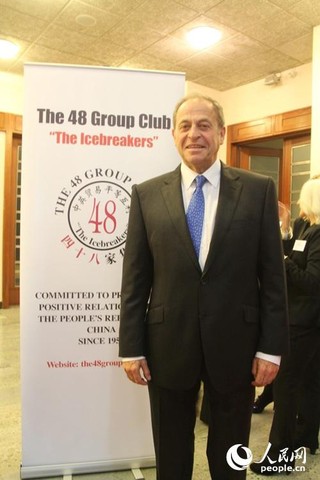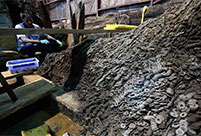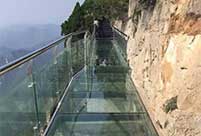

 |
| Stephen Perry (File photo/People's Daily Online) |
The new five year plan for 2016-2020 has been revealed by President Xi in a quiet way . It is probably the most significant Plan of China’s 66 years as it will transform China finally from a feudal society into a modern economy. That process was started in 1949 and really accelerated from 1978.
Following a period of growing through low-cost exports and transforming the peasantry into a modern work force in manufacturing and the service industry, China is now ready to complete the last phases of change to a modern market economy led by the Party and the government.
From here to 2020 the order of the day is transition, building an industry and service economy that can be the basis for China in the first half of this century.
For China to compete and be modern it must be as innovative as other developed economies. China is setting the highest standards for becoming innovative.
China must overcome its poor environmental record and lead the world in innovation of climate change. China is in the unique global position of having to do this to meet its peoples reasonable requirements, and is able to do it because China’s Party and Government have been preparing seriously for over 10 years.
China needs to create wealth throughout the nation to take the per capita to $10,000 by 2020 but must also spread that wealth more fairly and continue the process of removing the poor from poverty and firmly establishing a new urban society across China.
At the same time China needs to develop a caring Welfare System that is appropriate to the needs of the people , but does not build dependency or excess. So it must be alert to the problems that have occurred in developed economies where their Welfare States have weighed the economy. China must be caring and lean.
All of this is to achieve the first centenary goal of 2021. Can China do it? It has achieved all its main targets since 1978, and that is by having realistic short, medium and long term goals.
China aims to be a modern socialist country by 2049 when the People's Republic of China marks its centennial, and that means this period of planned market economy will transform yet again in about 20 years towards the next centenary goal of 2049.
The fair distribution of wealth will be accompanies by a sense of reasonable standards of living based upon an environmentally friendly set of objectives. So transport will be changed to meet that target. Industry will adjust its methods to be careful about pollution, and food and water will improve.
China will move its excess capacity to help the peoples of the Silk Road and some other areas. This will involve embracing the concept of common prosperity where China helps its neighbours and beyond achieve better standards of living based on new transport, energy and communications.
China will develop good relations with other bigger economy nations and develop a new concept of major power relationships.
In the process China will help the world by creating a modern form of socialism with Chinese characteristics. It will be a 22nd century model.
China’s path from 1978 to 2049 will be based on the scientific path of development. That means challenges and problems will be expected and met with calm analysis and policies.
China’s officials and leading people must reject corruption and amassing personal fortunes and commit to the objectives of the Chinese Dream and the two centenary targets.
If the officials become corrupted, or stay corrupted, then China cannot achieve its goals. Of all its challenges corruption has proved to be the most determined. Dealing with it takes strength as people get confused and worried. But China’s Party knows this challenge is the first one.
China will not tread an easy path and it will have to withstand internal and external challenges. But if it is modest and careful with its assets and maintains a strong policy when needed, then China can meet the 2021 and 2049 targets.
The author is Chairman of the UK based 48 Group Club.
Views and opinions expressed in this article are those of the author.
 Cats who immediately regretted their life choices in photographs
Cats who immediately regretted their life choices in photographs Beautiful girl from police college becomes Internet hit
Beautiful girl from police college becomes Internet hit 10 tons of copper coins unearthed in 2,000-yr old tomb
10 tons of copper coins unearthed in 2,000-yr old tomb In Pics: Amazing Chinese fighters
In Pics: Amazing Chinese fighters
 When a Chinese woman marries an Indian man
When a Chinese woman marries an Indian man Love beyond limit of heights in the world
Love beyond limit of heights in the world
 Photos of beautiful teacher hit the Internet
Photos of beautiful teacher hit the Internet Transparent Over-cliff Path Cracked Suddenly
Transparent Over-cliff Path Cracked Suddenly Russian helicopter lands safely after being attacked in Syria
Russian helicopter lands safely after being attacked in Syria Top 20 hottest women in the world in 2014
Top 20 hottest women in the world in 2014 Top 10 hardest languages to learn
Top 10 hardest languages to learn 10 Chinese female stars with most beautiful faces
10 Chinese female stars with most beautiful faces China’s Top 10 Unique Bridges, Highways and Roads
China’s Top 10 Unique Bridges, Highways and Roads Fare changes
Fare changes Beyond Movember
Beyond Movember Repairing a wrecked reputation
Repairing a wrecked reputation Washington losing leverage in S.China Sea
Washington losing leverage in S.China SeaDay|Week